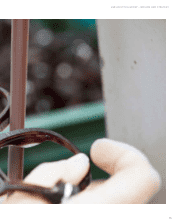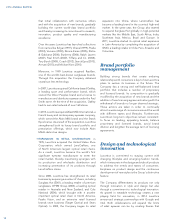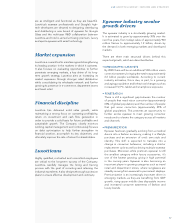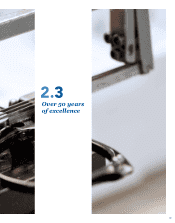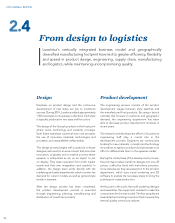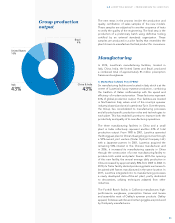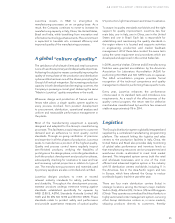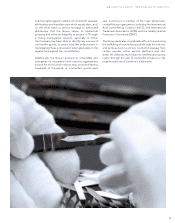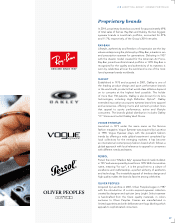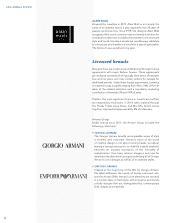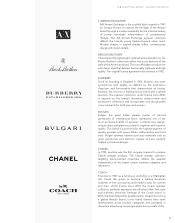LensCrafters 2014 Annual Report Download - page 26
Download and view the complete annual report
Please find page 26 of the 2014 LensCrafters annual report below. You can navigate through the pages in the report by either clicking on the pages listed below, or by using the keyword search tool below to find specific information within the annual report.
31%
2010
44%
25%
The manufacturing facility in Campinas (Brazil),
acquired in January 2012, produces both plastic and
metal frames for the Brazilian market. In September
2012, Luxottica launched the first locally designed
and produced Vogue Eyewear collection for this
market. Between 2013 and 2014, the Company
added the production of select Ray-Ban, Arnette
and Oakley collections. In 2014, the Campinas plant
produced approximately 50% of the eyewear sold by
Luxottica in the Brazilian market.
Over the years Luxottica has progressively diversified
its technology mix from traditional metal, plastic
injection and acetate slabs to include aluminum,
wood, die casting, fabrics and the LiteForce material.
This technology shift has reduced the weight of
metal-based frames from 44% of total production
output in 2010 to approximately 30% in 2014.
The manufacturing process for all frames begins with
the creation of precision tooling and molds based
on prototypes developed by in-house designers and
engineering staff.
Metal frames
Luxottica’s manufacturing process for metal frames
has approximately 70 different phases, beginning
with the production of basic components such as
rims, temples and bridges, which are produced
through a molding process. These components are
then welded together to form frames over numerous
stages of detailed assembly work. Once assembled,
the metal frames are treated with various coatings
to improve their resistance and finish, and then
prepared for lens fitting and packaging.
Plastic frames
Plastic frames are manufactured using either a milling
or an injection molding process. In the milling process,
a computer-controlled machine carves frames from
colored acetate slabs. This process produces rims,
temples and bridges that are then assembled,
finished and packaged. In the injection molding
process, plastic resins are liquefied and injected into
molds. The plastic parts are then assembled, coated,
finished and packaged.
Acetate
Injected
Metal
2014 ANNUAL REVIEW
24
Technology breakdown
2014
35%
32%
33%



